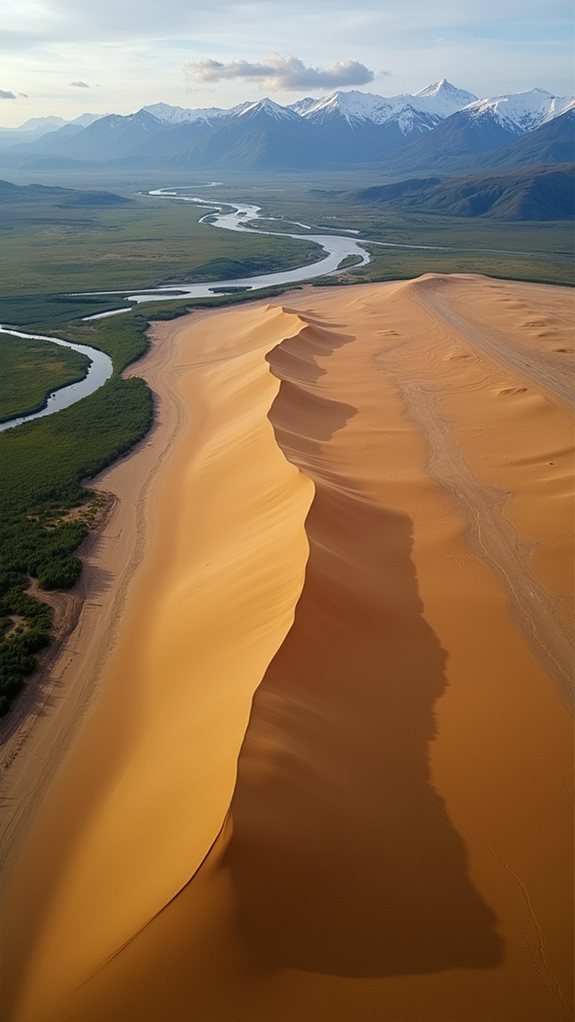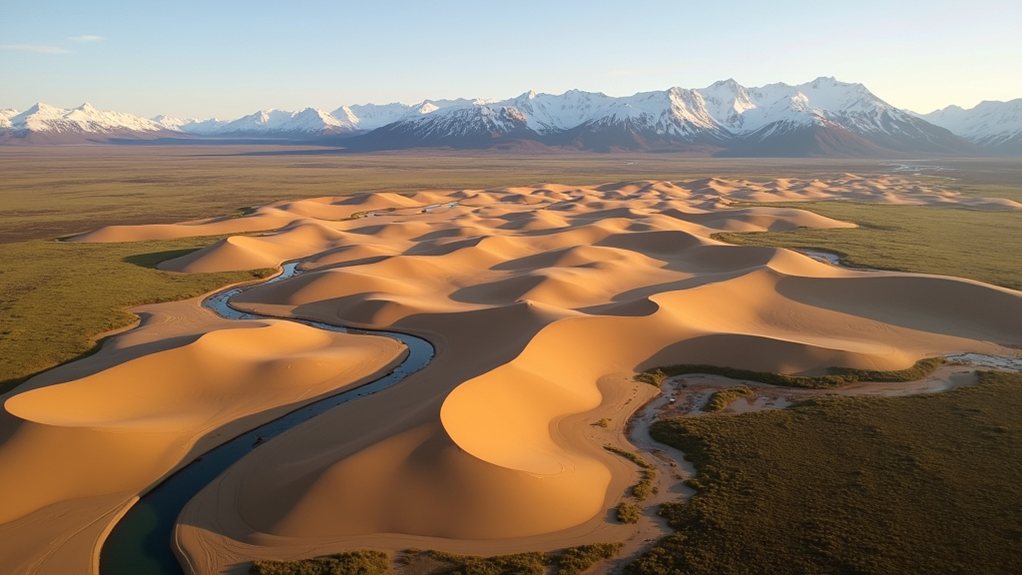When most people picture Alaska’s remote Arctic region, they don’t imagine vast stretches of sand dunes rising against a backdrop of boreal forest. Yet Kobuk Valley National Park, one of America’s least visited wilderness areas, harbors the Great Kobuk Sand Dunes—a 30-square-mile expanse where summer temperatures can surprisingly soar above 100°F. This desert-like anomaly, formed from glacial sediment thousands of years ago, stands in stark contrast to the surrounding tundra, creating a geographical puzzle that’s challenged scientists for decades.
A Desert Paradox in the Arctic Wilderness

Tucked away beyond the reach of roads and conventional travel methods, Kobuk Valley National Park stands as one of Alaska’s most pristine wilderness treasures. Located in northern Alaska near the Arctic Circle, this remote sanctuary defies Arctic stereotypes by featuring not just ice and tundra but also the Great Kobuk Sand Dunes, a sprawling 30-square-mile desert-like phenomenon that seems paradoxically placed in this northern domain.
These remarkable dunes, surrounded by towering peaks and vast tundra landscapes, create a surreal contrast that few of the park’s 17,600 annual visitors get to witness.
The park serves as a critical migration corridor for the Western Arctic Caribou Herd and supports a diverse ecosystem including black bears, grizzlies, wolves, and multiple bird species. Wildlife enthusiasts might spot wolverines or foxes patrolling their territory, while the Kobuk River teems with whitefish and other species, creating an angler’s paradise for those willing to explore this far north.
You won’t find developed campsites or marked trails here—Kobuk Valley demands self-sufficiency and orientation skills from its visitors. Adventurers typically arrive by bush plane, as no roads lead to this pristine wilderness.
Once there, backcountry hiking across the dunes, paddling the Kobuk River, or fishing in pristine waters await those prepared for extreme and unpredictable weather conditions. The Great Kobuk Sand Dunes stretch across 25 square miles above the Arctic Circle, creating a stunning visual paradox. Surprisingly, summer temperatures in the dunes can soar to 100°F or higher, creating an almost desert-like microclimate in this Arctic region. Similar to Gates of the Arctic, visitors should be prepared for a true wilderness experience with no established roads or official trails within the park boundaries.
The park holds deep cultural significance as traditional hunting grounds for Native Alaskans. Onion Portage (Paatitaaq) remains a significant historical site where Indigenous peoples have hunted caribou for thousands of years. The surrounding areas are home to numerous Iñupiat communities who maintain strong cultural connections to these lands.
Summer brings the peculiar phenomenon of polar days when the sun barely sets, while winter plunges the region into extended darkness. Unlike Greenland’s cozy snow-dome retreats, accommodations here are limited to what visitors bring themselves, emphasizing the untamed nature of this wilderness.
Despite its challenges—or perhaps because of them—interest in Kobuk Valley continues to grow among adventurers seeking freedom in one of America’s last truly wild places, where sand dunes and Arctic tundra create an unexpected marriage of landscapes rarely seen elsewhere on Earth.






